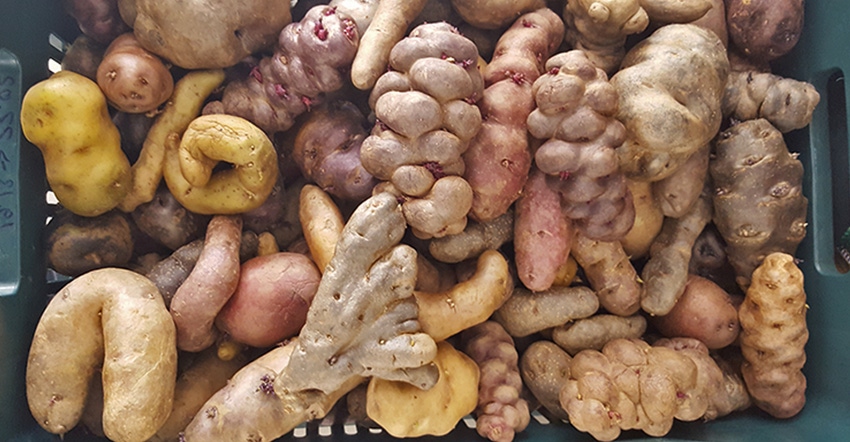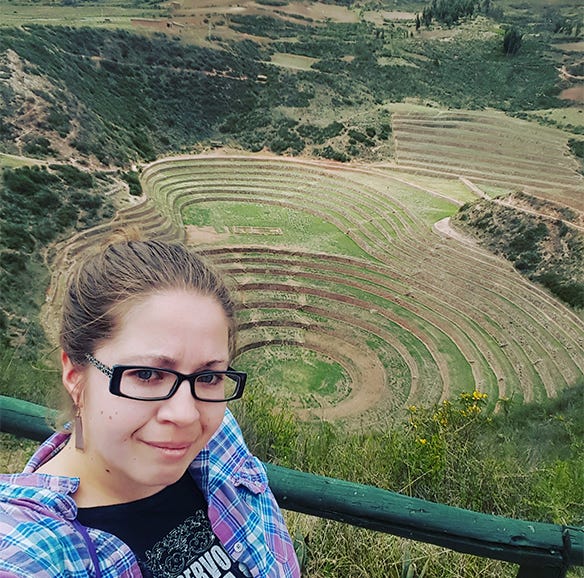
Laura Shannon is the University of Minnesota’s new potato breeder.
Shannon’s potato genetic lab is located on the St. Paul campus.
Minnesota growers produce about 2 billion pounds of potatoes a year in all market classes. Potatoes are the largest non-grain crop in the world.

POTATO ORIGIN: The University of Minnesota’s new potato breeder, Laura Shannon, visited the Incan agricultural terraces in Moray, Peru, near the origin of potatoes. (Laura Shannon)

In a question-and-answer interview with The Farmer, Shannon shared this information:
When did you come on board with U-M?
I started in August. I am replacing Christian Thill, who died suddenly and tragically in 2014. Tom Michaels has been maintaining the germplasm as the interim breeder for the past several years.
What is your potato research background?
I am trained as a computational geneticist, my graduate work was in maize and I spent several years as a postdoc [student] studying dog genetics at Cornell [University]. A year ago, I joined Jeff Endelman's potato breeding lab at the University of Wisconsin as a postdoc, where I worked with Jeff and the International Potato Center in Peru on a large-scale data analysis project. I am excited to bring the skills and techniques I learned working on these disparate organisms to bear on the comparatively complicated genomes of potatoes.
What have you learned thus far about Minnesota potato growers and the potato industry?
The Minnesota potato growers and industry have been incredibly welcoming. They're clearly a strong and well-organized group. From what I can tell, the challenges facing Minnesota growers are the challenges facing growers in general: changing disease and insect pressures, negotiations with their communities around water and land usage, and the increasing frequency of extreme weather events.
What are the research areas that you are pursuing, or will pursue?
I plan to develop new varieties that address the needs of Minnesota growers. However, the typical time to develop a new potato variety is seven to 10 years. My lab is particularly interested in exploring methods to increase the speed of the breeding process, including marker-assisted breeding, computational techniques and diploid breeding. I'm looking forward to discussing breeding targets with Minnesota growers, and I'm open to suggestions.
In the meantime, I'm interested in skin color and maintenance of skin color in red potatoes, and in increasing disease resistance and water use efficiency within my breeding program. Colin Jones, a graduate student in the department, is working on identifying nitrogen-efficient varieties.
Any outreach programs planned for growers in the near future?
I was at the Northern Plains Potato Growers Association field day in August, and I hope to continue to participate in their events, as well as the ones for Area 2 growers.
Would you like to hear from growers? How may they contact you?
I would love to hear from growers! My email address is [email protected] and my phone number is 612-624-9737.
About the Author(s)
You May Also Like






